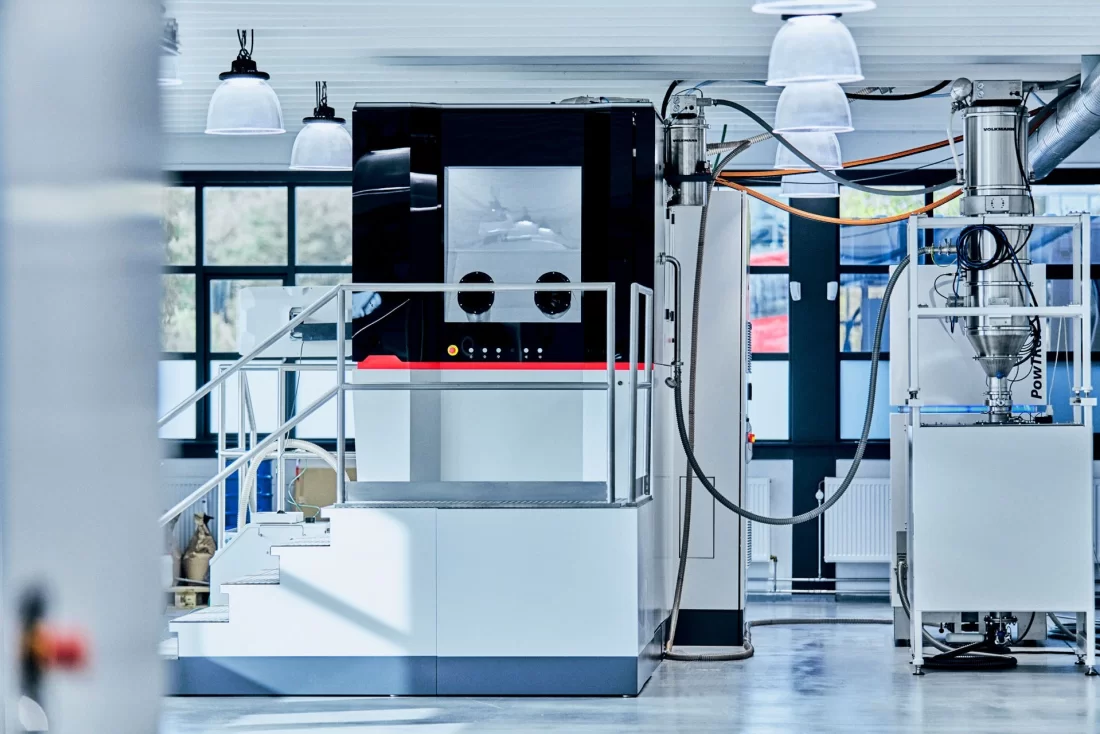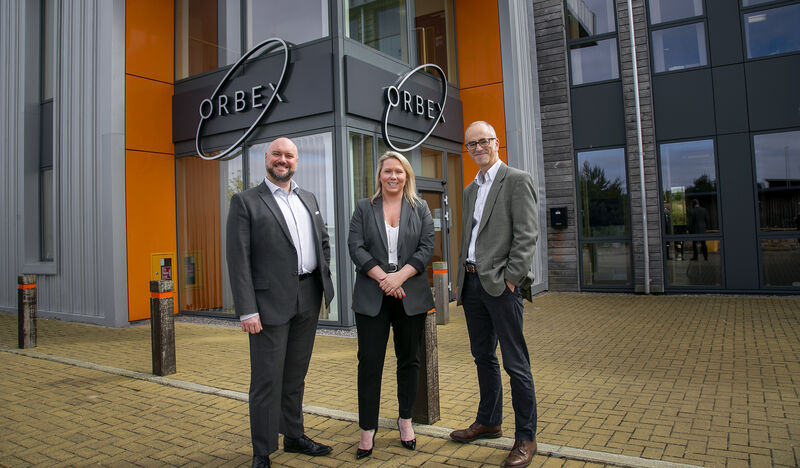Orbex, a UK-based startup developing small satellite launch technologies, has raised £40.4 million ($45.7 million) in Series C funding, building on its £48 million ($54.4 million) raised since 2017, plus grant money from the European Commission Horizon 2020 Programme and the European Space Agency‘s (ESA) Boost! Initiative. The multi-million funding round will help strengthen Orbex’s place in the growing British private space economy, which is gearing up to rejoin the space race.
In the last few years, Britain’s ambition to become an international space center has led to a new phase in the country’s involvement in space. Although historically, the U.K. has had limited involvement with space launch capabilities, it does have a space program and has been operating in space since 1969. However, it wasn’t until May 2021 when the U.K. government announced that the country was ready to develop spaceports and rockets, hoping to become an international space center with at least 30 rockets a year launching from British soil. Around that time, aspiring space businesses could apply for a license to launch from U.K. soil. Orbex was one of them.
A prototype for Prime, the firm’s first reusable launch vehicle, was unveiled earlier this year and is still undergoing testing and completion at Space Hub Sutherland, the U.K.’s first operational spaceport in northern Scotland, before its debut flight in 2023. Geared toward launching small satellites into orbit, the 62-foot-long (19-meters), two-stage rocket is fitted with seven 3D printed engines, uniquely manufactured in a single piece, without joins. For the task, the company uses a new custom-made AMCM M4K 3D printer that can print full-scale monobody rocket engines and turbopumps in-house, avoiding the need to use any welds, bolts, or flanges.
 Orbex’s new custom-made AMCM M4K 3D printer. Image courtesy of Orbex.
Orbex’s new custom-made AMCM M4K 3D printer. Image courtesy of Orbex.Orbex relies on a wide range of advanced materials and manufacturing techniques to create each Orbex launch vehicle, including additive manufacturing for most propulsion subsystems and advanced carbon fiber fabrics and rovings for the main structures and tanks. The use of lightweight carbon fiber to form the structures and tanks delivers enormous strength with very low mass, says the company, while enabling the tanks to hold cryogenic fluids without introducing metal or plastic liners.
Because of the scale and mass of the components being produced, the process is quite challenging, so Orbex has also added a de-powdering facility to automate how the unsintered superalloy powders are removed from the engine parts after production, using a large machine from Solukon, the SFM-AT1000-S, and had recently hinted to further expansion of its propulsion and carbon fiber production facilities. Now, according to the company, the new funding round will allow Orbex to scale its resources, which could also mean its 3D printing facilities.
“The funding round we’ve just closed is the third major funding round of the company called Series C. It’s a substantial amount of money for the company, but it also unlocks some other funding sources for us that will give us around $100 million/£85-90 million to deploy in the next couple of years as we move forward with launching our first rocket into space and also several other important new projects that we are working on,” suggested Orbex Founder and CEO Chris Larmour in a social media post.
 At Orbex facilities in Forres, Moray (from left to right): Alastair McMillen and Nicola Douglas from The Scottish National Investment Bank, and Simon Beswick from Orbex. Image courtesy of Orbex.
At Orbex facilities in Forres, Moray (from left to right): Alastair McMillen and Nicola Douglas from The Scottish National Investment Bank, and Simon Beswick from Orbex. Image courtesy of Orbex.This latest funding round saw a renewed commitment from existing investors BGF, Heartcore Capital, High-Tech Gründerfonds, and Octopus Ventures. It also attracted several new investors, including The Scottish National Investment Bank; Jacobs – NASA’s most prominent services provider–; special investment fund The Danish Green Future Fund; Swiss VC firm Verve Ventures; and British entrepreneurs Phillip and James Chambers, founders of Workday Peakon.
With Orbex’s Prime rocket currently undergoing a wide variety of integration tests, including the testing of the main propellant tanks and engines, as well as testing launch procedures, including rollout, strongback erection, and fuel in advance of the first launch, which will carry a payload developed by Surrey Satellite, one of the world’s largest small satellite developers, investors are convinced that the startup will be a trailblazer in the European race to space.
 The Orbex Prime rocket. Image courtesy of Orbex.
The Orbex Prime rocket. Image courtesy of Orbex.Heartcore Capital Co-founder and Partner Jimmy Fussing Nielsen indicated that with this new funding round, Orbex could become the first company to launch from European soil in decades. He hopes that satellite companies hoping to ride-share on a “bus” from the U.S., China, India, or Kazakhstan, will soon realize that “a dedicated ‘Uber-ride’ to space is undoubtedly better for business.”
Similarly, High-Tech Gründerfonds Principal Yann Fiebig described Orbex as a startup that “underpins” its leadership in the European micro launcher market. He also pointed out that with this new round, Orbex has reached all technical, commercial, and financial requirements to launch in 2023.
“Today, Orbex secured the financing to deliver on its maiden launch in 2023. As exciting as space travel sounds, Orbex is not about hype, but rather about building a successful and sustainable space launch business which will be here for the long term,” commented Fiebig, who has been investing in Orbex since 2016, back when Space Tech was still a niche segment in Europe.
Locally, governments and financial institutions invested in the up-and-coming U.K. space industry have high hopes for Orbex. Not only is the company innovating through the development of sustainable rocket technology, but it is also supporting the local creation of jobs. For example, David Oxley, director of strategic projects at the Scottish agency Highlands and Islands Enterprise (HIE), said Orbex created dozens of high-quality manufacturing jobs over the past couple of years and recently announced plans for many more. Even the U.K. Government’s Science Minister, Nusrat Ghani, explained that there are more than 47,000 jobs in the local space sector and highlighted the importance of a company like Orbex getting a multi-million-pound investment as an excellent opportunity to build further on the country’s ambitious space plans.
As Orbex counts down to the first vertical launch from U.K. soil, the new funding round will allow it to scale up resources and unlock future projects and opportunities toward its long-term goal of establishing a reliable, economically successful, and environmentally sustainable European space launch business.
Subscribe to Our Email Newsletter
Stay up-to-date on all the latest news from the 3D printing industry and receive information and offers from third party vendors.
You May Also Like
Precision at the Microscale: UK Researchers Advance Medical Devices with BMF’s 3D Printing Tech
University of Nottingham researchers are using Boston Micro Fabrication‘s (BMF) 3D printing technology to develop medical devices that improve compatibility with human tissue. Funded by a UK grant, this project...
3D Printing Webinar and Event Roundup: April 21, 2024
It’s another busy week of webinars and events, starting with Hannover Messe in Germany and continuing with Metalcasting Congress, Chinaplas, TechBlick’s Innovation Festival, and more. Stratasys continues its advanced training...
3D Printing Webinar and Event Roundup: March 17, 2024
It’s another busy week of webinars and events, including SALMED 2024 and AM Forum in Berlin. Stratasys continues its in-person training and is offering two webinars, ASTM is holding a...
3D Printed Micro Antenna is 15% Smaller and 6X Lighter
Horizon Microtechnologies has achieved success in creating a high-frequency D-Band horn antenna through micro 3D printing. However, this achievement did not rely solely on 3D printing; it involved a combination...





























